Fans recognize the Pittsburgh Penguins as one of the few teams that won back-to-back Stanley Cups, where they achieved something tremendously difficult and found championship-level success two years in a row for the second time in franchise history. The first instance occurred in 1991 and 1992 and the second set of consecutive Cups were in 2016 and 2017.
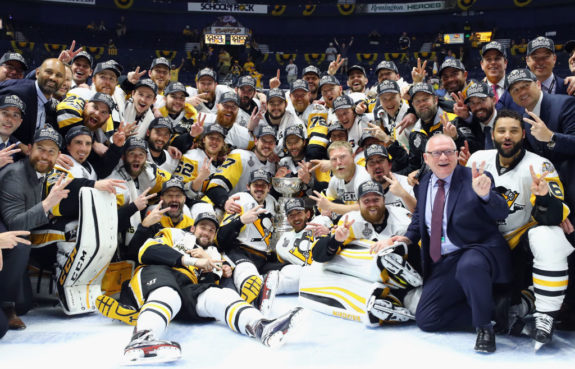
While their recent success can be attributed to a number of different explanations, one thing I noticed that the Penguins had during their most successful seasons was chemistry. A team that operates smoothly and at the same skill level is almost like catching lightning in a bottle, it doesn’t happen very often. The Penguins most recently captured chemistry in the 2015-16 and 2016-17 seasons and they could possibly recreate similar magic this upcoming season (from ‘Breaking Down the 2016-17 Penguins Roster’ – Pittsburgh Post-Gazette, 10/13/16).
A Look Back…
Despite a few roadblocks and injuries, most, if not all, the Penguins were hungry and ready to work for the Cup during the 2015-16 and 2016-17 seasons. All of their players contributed to the offensive success, veterans meshed with newcomers, and the defense worked well with the goaltender.
The HBK Line
The third line comprising of Carl Hagelin, Nick Bonino, and Phil Kessel contributed to the many wins leading up to the 2016 Stanley Cup. The “HBK Line” scored one-fifth of the goals tallied during the 2016 Playoffs and became of the most fruitful lines for the Penguins.
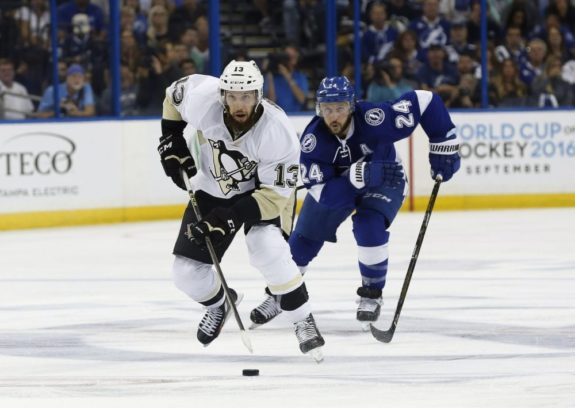
After Evgeni Malkin injured his elbow against the Columbus Blue Jackets, just weeks before the playoffs, coach Mike Sullivan decided to move around some players which resulted in the “HBK Line.”
Head coach Mike Sullivan
The irony is that Sullivan might never have realized he could deploy his depth this way and present these problems for the opponent had it not been for Malkin’s injury in mid-March. That’s when, out of necessity, he put Hagelin, Bonino and Kessel on the same line. They clicked right away and combined for 45 points in the 16 games Malkin missed, including two in Game 1 of the first round against the New York Rangers
This line “clicked” and their chemistry helped the Penguins win the Stanley Cup during that season. Comparatively, the HBK line was not as successful the following season, possibly because they had very little ice time together. However, this proves that chemistry doesn’t necessarily happen easily, but it can happen if each player performs at their highest level and the right players with the right skills work together.
Sid and the Kids
Another very successful line included captain Sidney Crosby and young players, Jake Guentzel and Conor Sheary. Guentzel, a 22-year-old rookie at the time, found himself playing with one of the top players in 2017. Along with Guentzel, second-year forward Sheary played with Crosby for the entirety of the 2016-17 season and raked in 53 points for the Penguins.
This line, minus its gimmicky name, had instantaneous chemistry. The two younger, faster players teamed up with one of the most skilled and hardworking players in the league to form a productive line that took advantage of chances. Crosby’s natural instinct and veteran play helped elevate Sheary’s and Guentzel’s performances, while “The Kids” operated at Crosby’s level and took shots set up by the captain. Their quickness made defenses scramble, while their differing skills and instincts led to shot after shot.
Marc Andre Fleury and Matt Murray
The Penguins faced a dilemma with their defense during the 2016-17 season. Prior to the playoffs, the team lost Kris Letang, Trevor Daley, and Olli Maatta to injuries, and the coaching staff had to recalculate their strategy before heading into the playoffs. With the defense in shambles weeks leading up to the playoffs, two components that were consistent for the team were goaltenders Marc-Andre Fleury and Matt Murray.
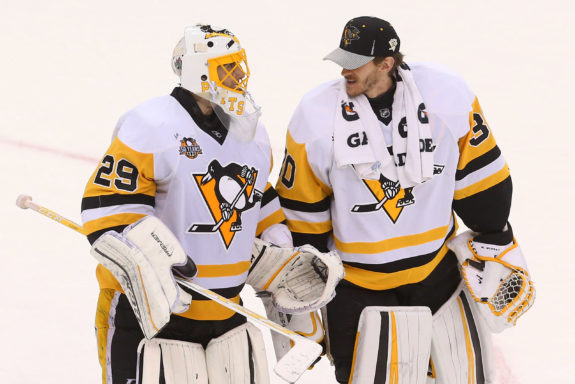
Fleury began his career with the Penguins in 2003, quickly becoming the starting goaltender and leading the team through numerous playoff runs. Murray, just 23 years old at the time, helped the Penguins win the Stanley Cup in the 2015-16 season and was expected to start for the 2016-17 playoffs. This was quickly changed because Murray sustained an injury during warmups. This eventually led the veteran to take his place, performing exceptionally well for the first few rounds of the playoffs.
Fleury and Murray went back and forth for two seasons, but they worked well with each other and the rest of the team during the 2016-17 season. Fleury at one point had a .934 save percentage and Murray, once he was healthy, made crucial saves while standing as a reliable pillar for the rest of the team (from ‘This Post Season, Penguins’ Marc Andre Fleury Is Having Success, and Fun’ – The New York Times – 4/28/17).
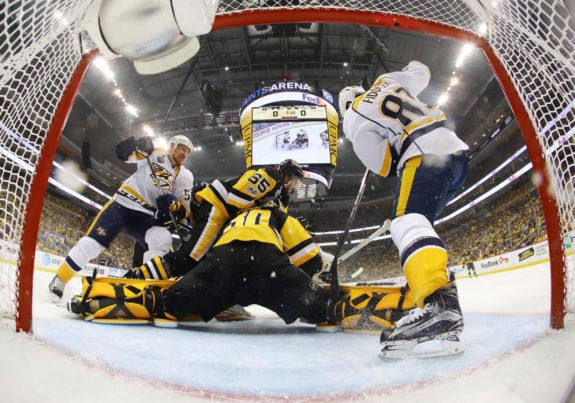
Altogether, these two guys had immense chemistry with the rest of the team, and even though they never played on the same ice, the friendship/mentorship off of the ice definitely improved their play.
Now What?
After taking a look into some of the past successful lines and player combinations, is it possible for the Penguins to replicate such chemistry in the 2019-20 season? Simply put, the best way to rekindle chemistry on the team is to rearrange lines and player combinations. The Penguins have plenty of talent to play around with and the most effective combinations often came from dire circumstances. However, this time they should take a risk and work with their roster in new ways to refresh the team.
Because defense is an area of concern, the coaching staff needs to create effective pairs. Right now, the only combination that works well is Kris Letang and Brian Dumoulin. Given that the top pair will remain the same, it’s important to use all of their resources to freshen the defense and make the Penguins a difficult team to score on. For example, it would be good idea to put Marcus Pettersson on the same pair as Jack Johnson, as Pettersson’s style should help Johnson play with more urgency and speed.
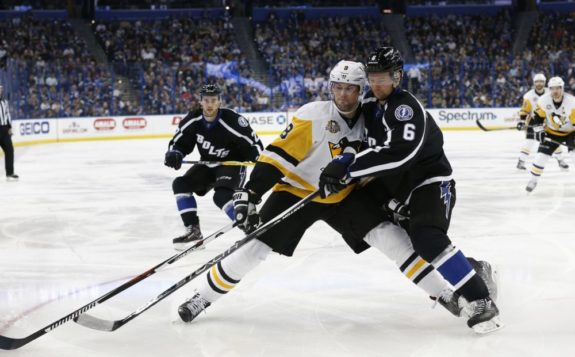
In addition to the defense, creating a successful line with Evgeni Malkin at center will help rekindle team chemistry as well as Geno’s overall performance. The good thing is that there is enough talent to experiment with different combos. My guess is that Malkin will need a younger player, perhaps Zach Aston-Reese, on his side to help his speed and a seasoned vet, like Patric Hornqvist, to help create more chances.
Now is the best time to test out different line combinations to re-energize the Penguins. Chemistry is key to winning championships and matching player’s skills and abilities would make the team more successful.